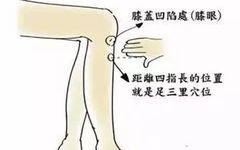Traditional Chinese Medicine (TCM) holds that:
|
1. Ma: Indicates that Qi can flow, but blood cannot. 2. Mu: If the sensation of ma is severe, it indicates mu, meaning neither Qi nor blood can flow. 3. Suan: Indicates that the meridians are open, but there is insufficient Qi and blood. 4. Zhang: Indicates that there is abundant Qi; individuals with this constitution tend to be irritable, and if Qi cannot flow out, it leads to zhang. 5. Tong: Simple pain is due to blood stasis. 6. Yang: Indicates that Qi and blood are coming, and itching occurs during wound healing, which is different from generalized itching. |
Functions of Ten Important Acupuncture Points
1. Zusanli (ST36)
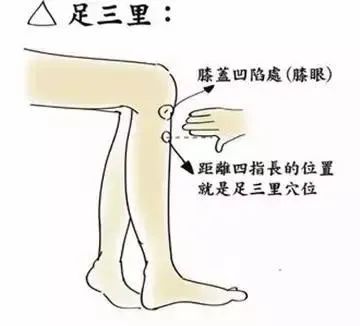
Function:
1. Strengthens the spleen and stomach;
2. Promotes metabolism and strengthens the body;
3. Enhances endocrine function and boosts immunity.
Needling Zusanli has preventive and therapeutic effects on diseases of the digestive, nervous, blood, circulatory, endocrine, urinary, and reproductive systems, especially for digestive disorders.
Indications:
Gastritis, chronic gastritis, gastric ulcers, gastric prolapse, gastric spasms, indigestion, hepatitis; neurasthenia, epilepsy, insomnia, headaches, anemia, hemiplegia, hypertension, hypotension, arteriosclerosis; coronary heart disease; diabetes, enuresis; impotence, premature ejaculation, nocturnal emissions, irregular menstruation, menorrhagia; colds; knee arthritis, lower limb arthritis, etc.
2. Guanyuan (CV4)

Function:
1. Nourishes the essence and stabilizes the foundation.
2. Tonifies the kidneys and strengthens yang, regulates menstruation, clears heat, and promotes diuresis. This point is effective for nourishing the kidneys, regulating Qi, and enhancing vitality, being crucial for male essence and female blood storage.
3. Supplements deficiency and stabilizes the foundation. This point enhances reproductive function, boosts immunity, prevents aging, and treats various deficiencies.
Indications:
Impotence, premature ejaculation, nocturnal emissions, irregular menstruation, cervical erosion, uterine prolapse, pelvic inflammatory disease, infertility, enuresis, urinary retention, urinary incontinence, cystitis, nephritis, urethritis, genital eczema; dysentery, hernia, prolapse, hypertension, diabetes; forgetfulness, neurasthenia; collapse, physical weakness.
3. Zhongwan (CV12)

Function:
1. Regulates the spleen and stomach;
2. Reduces counterflow and resolves stagnation. This point regulates the stomach, supplements deficiency, promotes Qi transformation, and stops vomiting.
Indications:
Gastric spasms, gastric ulcers, gastric prolapse, gastric distension, indigestion, vomiting, halitosis, enteritis, duodenal ulcers, dysentery, appendicitis, constipation, hepatitis, cholecystitis, jaundice, hypertension, angina, heat stroke, epilepsy, hysteria, neurasthenia, insomnia, cough, asthma, hematemesis, uterine prolapse, irregular menstruation. This point is particularly important for treating digestive system diseases.
4. Neiguan (PC6)
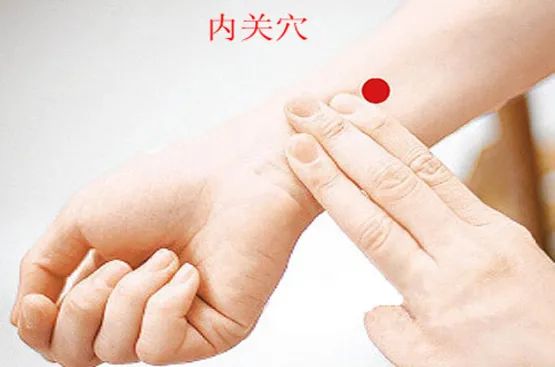
Function:
1. Regulates Qi and invigorates blood;
2. Calms the mind and stabilizes the spirit.
Indications:
Angina, myocarditis, rheumatic heart disease, bradycardia, arrhythmia; shock, coma, syncope, motion sickness, insomnia, hysteria, epilepsy, mental illness; gastric diseases, gastric spasms, vomiting, hiccups; diaphragm spasms, pregnancy sickness, hypotension, absence of pulse, etc. This point is particularly effective for various heart diseases and mental disorders.
5. Hegu (LI4)
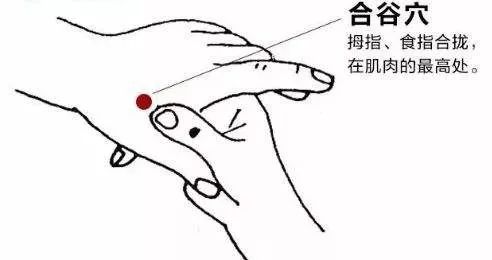
Function:
1. Clears heat and releases the exterior;
2. Dispels wind and relaxes the muscles, promotes gastrointestinal function. Its primary function is to clear heat and relieve pain.
Indications:
Colds, cough, headaches, trigeminal neuralgia, facial nerve paralysis, epilepsy, schizophrenia; enteritis, dysentery, hemorrhoids, pediatric prolapse, toothache, rhinitis, epistaxis; tonsillitis, conjunctivitis, deafness, acute shoulder rheumatism, finger spasms, difficult labor, measles, hyperhidrosis, aphasia, etc. It is particularly effective for headaches caused by colds.
6. Yongquan (KD1)
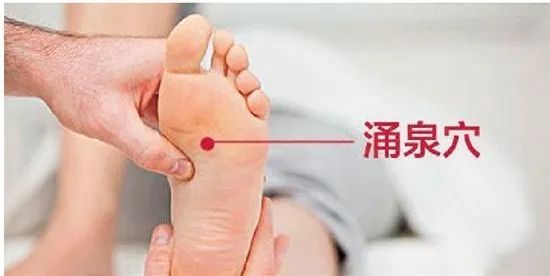
Function:
1. Clears the mind and awakens the spirit;
2. Calms the mind and stabilizes the spirit;
3. Clears heat and disperses wind.
Regular cupping on this point can guide the kidney’s empty fire and the turbid Qi of the upper jiao downward, and has the effect of soothing the liver, brightening the eyes, and calming the throat and heart. It can lower blood pressure and promote local blood circulation, helping to prevent age-related numbness and edema.
Indications:
Shock, coma, dizziness, heat stroke, forgetfulness, headaches, trigeminal neuralgia; epilepsy, hysteria, mental illness, pediatric convulsions; cerebral hemorrhage, functional paralysis, functional aphasia, facial spasms, hypertension, angina, myocarditis, tonsillitis, pharyngitis, cough, epistaxis, jaundice, stomach pain, edema, impotence, low back pain, knee pain, chest pain, vision loss, measles, hernia, etc.
7. Yanglingquan (GB34)

Function:
1. Promotes circulation and relieves stiffness;
2. Opens the meridians and benefits the joints;
3. Clears heat and benefits the gallbladder.
Indications:
Diseases of the lower limbs and lumbar region, such as knee arthritis, ankle arthritis, sciatica, peroneal nerve paralysis, vasculitis, rheumatoid arthritis, low back pain, etc. It is also a key point for treating liver and gallbladder diseases, with good effects on hepatitis, cholecystitis, and jaundice. Additionally, it has therapeutic effects on hypertension, epilepsy, enuresis, and athlete’s foot.
8. Fengchi (GB20)
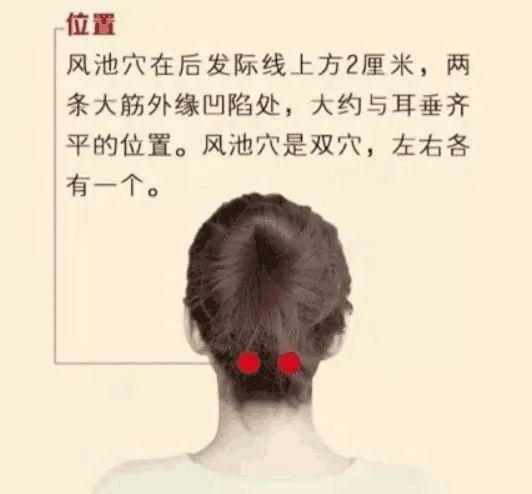
Function:
1. Clears the heart and brightens the eyes;
2. Clears heat and disperses wind;
3. Opens the orifices and invigorates the meridians.
Indications:
Cerebral thrombosis, concussion, meningitis, forgetfulness, epilepsy, mental illness, migraine, insomnia, dizziness, hyperthyroidism, stiff neck, glaucoma, night blindness, optic neuritis, retinitis, rhinitis, pharyngitis, hypertension, tinnitus, malaria, deafness, etc.
9. Yinmen (BL37)
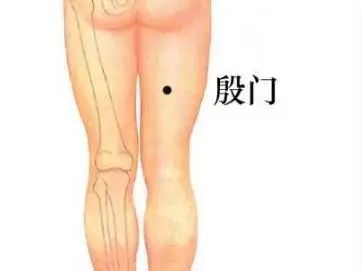
Function:
1. Opens the meridians and invigorates the collaterals;
2. Unblocks the tendons and channels.
Indications:
Low back pain, sciatica, lumbar disc herniation, lower limb muscular rheumatism, paralysis.
10. Mingmen (GV4)
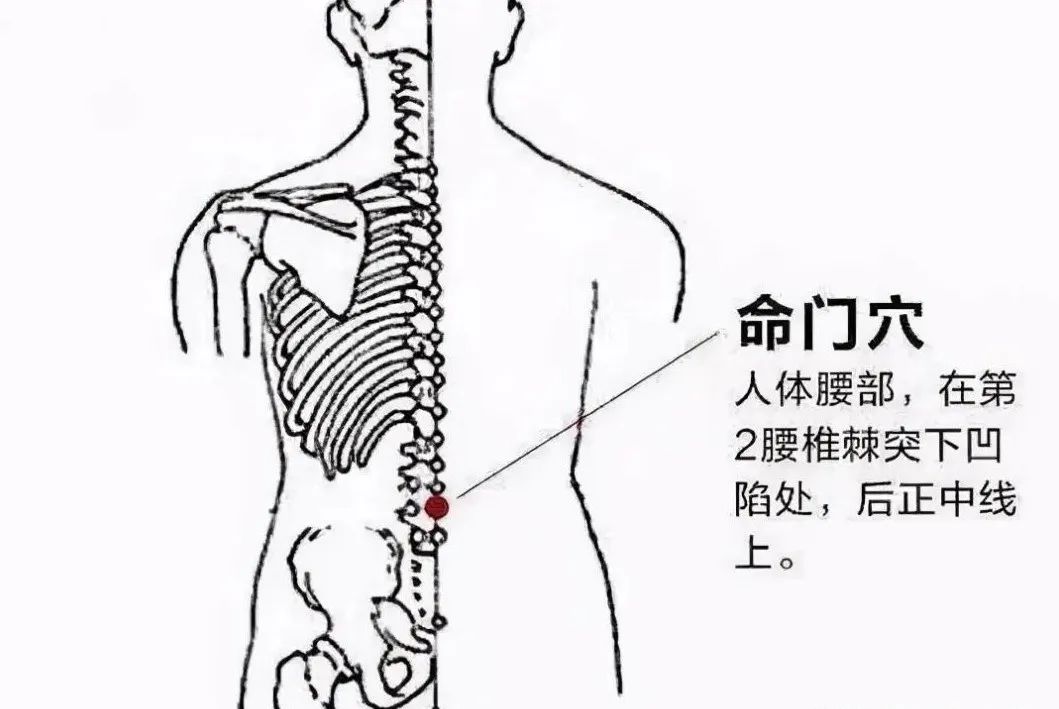
Function:
1. Nourishes the kidneys and regulates menstruation;
2. Regulates the intestines and stabilizes prolapse.
Indications:
Nocturnal emissions, impotence, irregular menstruation, dysmenorrhea, enuresis, low back pain, headaches, tinnitus, hemorrhoids, constipation.
Health Verse:
Health is an intangible asset, and wellness is a bank deposit;
Illness is a malignant overdraft, and serious illness is financial ruin;
Everything else is false, only health is true;
Do not wait until you are sick to find a doctor; practice wellness when you are healthy;
Better to stand for health than to lie down and take pills;
Health is always priceless; persist in wellness and health care.

